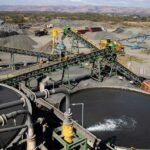Kenya is undergoing a remarkable transformation in its rail infrastructure, positioning itself as East Africa’s transportation and logistics hub. The government’s strategic investments in modern railway networks are not only enhancing domestic connectivity but also strengthening regional trade links across the African continent. At the heart of this development is the ongoing construction of Phase 2B of the Nairobi-Malaba Railway, a 262-kilometer line connecting Naivasha to the New Kisumu Port with an estimated investment of $3.7 billion. This critical infrastructure project forms part of Kenya’s broader vision to revitalize its transport sector and stimulate economic growth through improved movement of goods and people.
The Standard Gauge Railway (SGR) project remains Kenya’s flagship infrastructure achievement, with the completed Mombasa-Nairobi section already demonstrating significant economic benefits since its launch in 2017. This modern railway has reduced cargo transit times from Mombasa Port to Nairobi from several days to under eight hours, while passenger journeys now take just five hours compared to the previous twelve-hour road trip. The subsequent extension to Naivasha has further enhanced Kenya’s logistics capabilities, particularly through the Naivasha Inland Container Depot which serves as a crucial distribution point for goods destined for neighboring landlocked countries.
Complementing these rail developments is the ambitious Konza Technopolis project, often referred to as “Silicon Savannah.” While primarily conceived as a technology hub, this smart city initiative incorporates integrated transport planning that will eventually connect to Kenya’s expanding rail network. The technopolis represents Kenya’s forward-looking approach to infrastructure development, blending digital innovation with physical connectivity to create a comprehensive ecosystem for business and technology.
The economic implications of Kenya’s rail expansion are far-reaching. By providing efficient, high-capacity transport alternatives to congested road networks, these projects are reducing logistics costs for businesses and improving competitiveness in regional markets. The improved connectivity is expected to stimulate industrial growth along the railway corridors, particularly in manufacturing and agro-processing sectors that rely on efficient supply chains. Furthermore, the enhanced rail network strengthens Kenya’s position in implementing the African Continental Free Trade Area (AfCFTA) agreement by facilitating smoother cross-border trade.
Looking ahead, Kenya’s rail infrastructure strategy appears poised for continued expansion. Plans are underway to extend the SGR network beyond its current terminals, with future phases aiming to connect to the borders of Uganda and other neighboring countries. These developments, combined with ongoing port upgrades and special economic zone initiatives, are creating an increasingly attractive environment for both domestic and foreign investment. As Kenya’s rail revolution progresses, it promises to reshape not just the country’s transportation landscape but its entire economic trajectory in the years to come.
The success of these infrastructure projects demonstrates Kenya’s commitment to developing sustainable transport solutions that address both immediate logistical challenges and long-term economic objectives. With careful implementation and continued investment, Kenya’s rail network may well become the backbone of East African commerce, serving as a model for infrastructure-led development across the continent.










